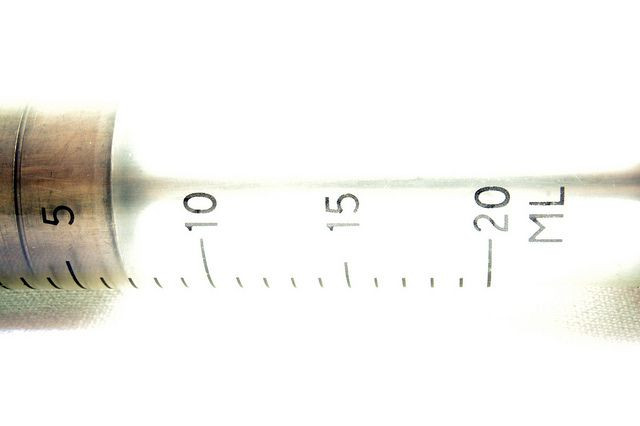New Syringe Remembers If It Has Been Used By Someone Else: ABC Syringe's 'Intelligent Ink' Indicates Contamination

A new type of syringe is the latest preventative measure in the global battle against blood-borne diseases like hepatitis and human immunodeficiency virus (HIV). Imbued with “intelligent ink,” the ABC syringe turns red after use, allowing physicians to determine immediately whether it’s sterile. The developers estimate that the technology will prevent upwards of 700,000 infections in five years.
While contaminated needles account for 30 percent of hepatitis infections and 5 percent of HIV infections worldwide, the issue is particularly rampant in India, where scavengers gather and “clean” used syringes. These are then sold to clinics throughout the country. Given the prevalence of recycled needles, even an honest doctor may have a hard time determining whether her clinical tools are sterile.
"When you compare a sterile syringe just out of its packaging with a syringe that's been washed, how do you determine the difference?" developer David Swann of Huddersfield University told reporters from CNN. "We conceived an intelligent ink that, if exposed to air by taking it out of the package or if the package is breached that would activate it and turn it red."
According to CNN, the intelligent ink reacts with carbon dioxide, turning dark red upon exposure. A transparent piston ensures physicians that the needle has not been outside its hermetically sealed environment for more than few minutes. To prevent unscrupulous doctors from ignoring this warning, the developers envision an accompanying public information campaign designed to associate red needles with contamination.
A finalist for the prestigious INDEX Awards, the technology initially faced financial obstacles. In order to integrate the product into the healthcare market, its price could not differ markedly from that of traditional syringes.
"We had to be really quite clever in looking at technologies that cost next to nothing, and modified-air packaging is one of those technologies," Swann told reporters. "It only adds 1% to the retail price, so on a two-and-a-half pence [four cents] syringe it becomes quite an interesting proposition."
Swann said that if the ABC syringe accounts for as little as 5 percent of injections administered in India, the product will prevent more than 700,000 infections and save $130 million in medical costs over a period of five years.
"This innovation speaks to the endless possibilities of design, creativity and innovation in addressing real-world issues," said Ravi Naidoo, managing director of Design Indaba and a member of the INDEX Award jury. "In addition to being cost-effective, which will ensure the accessibility of the solution, it also allows patients to take charge of a critical issue — great example of empowerment through smart design."



























